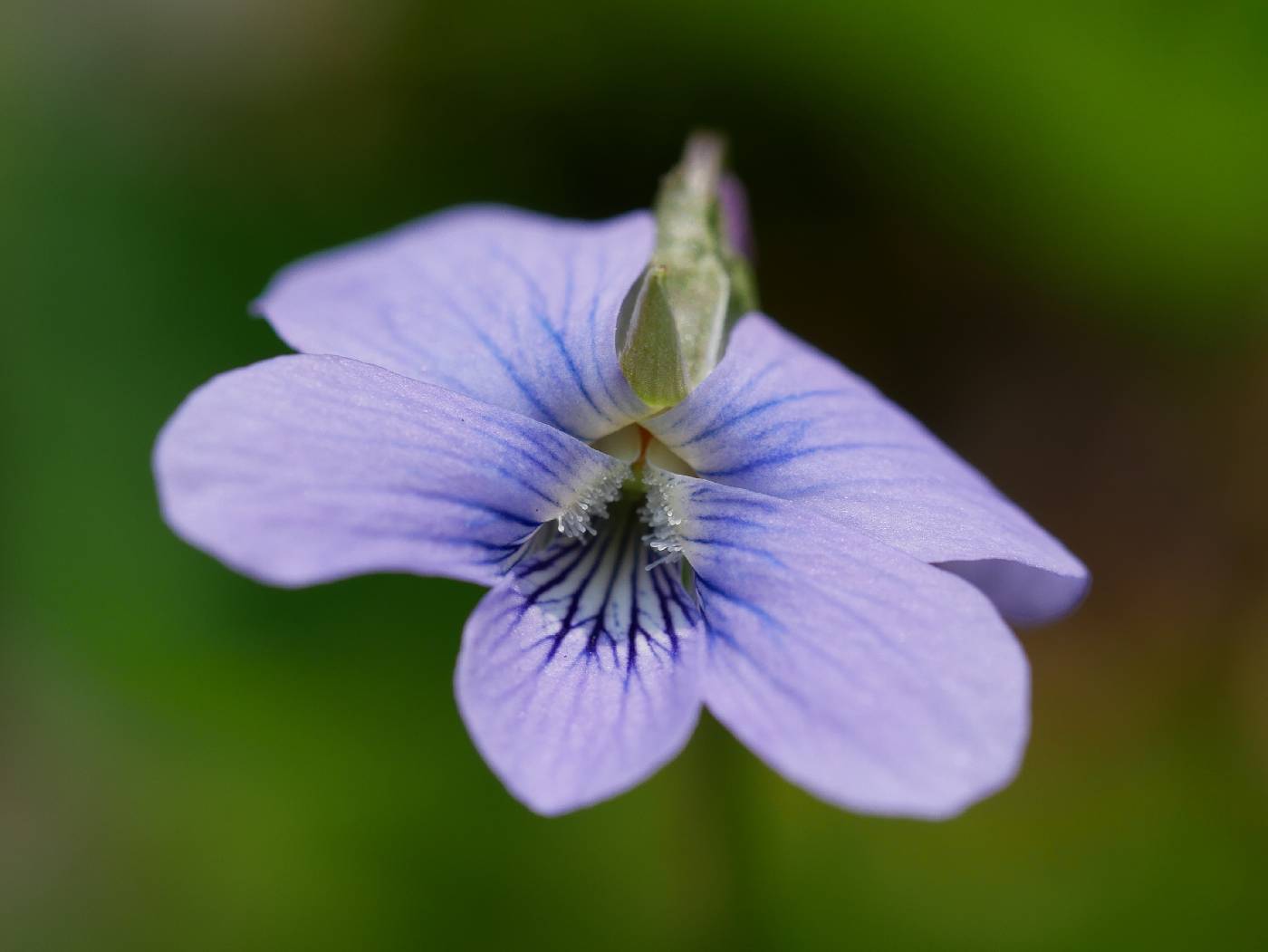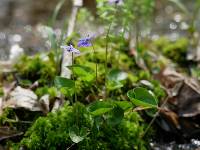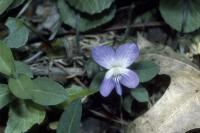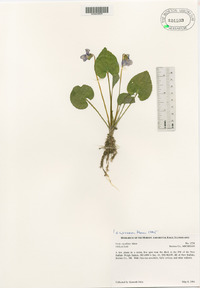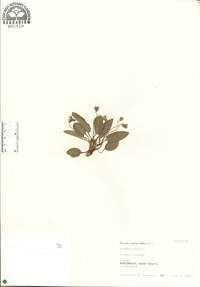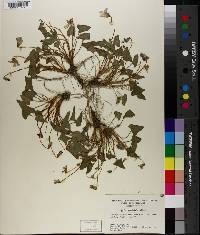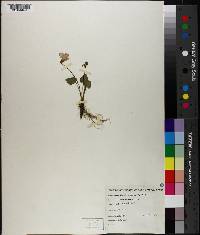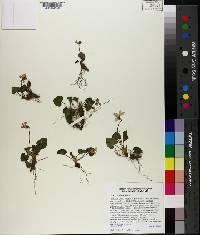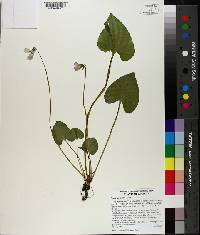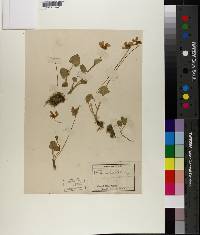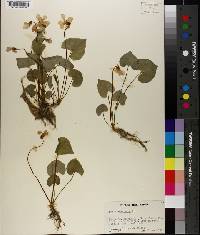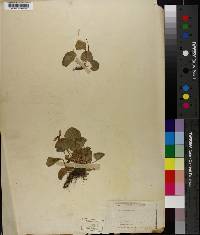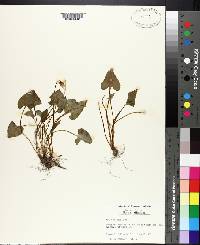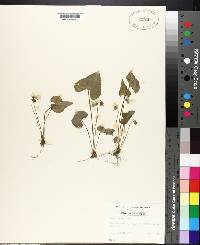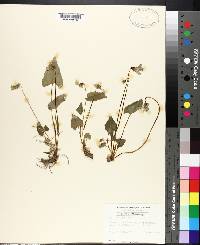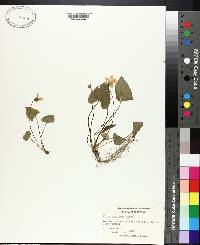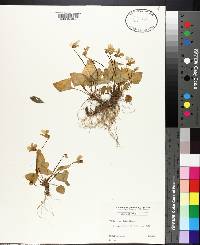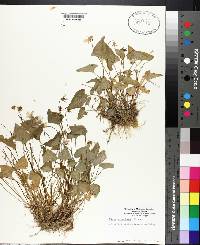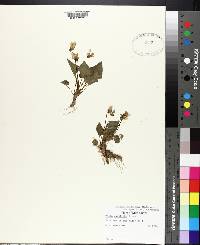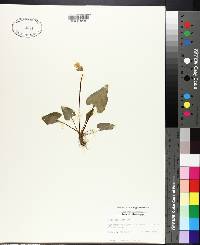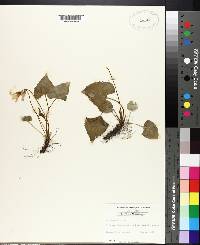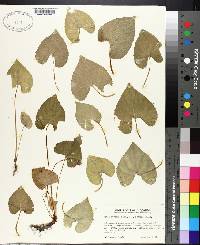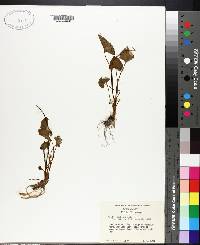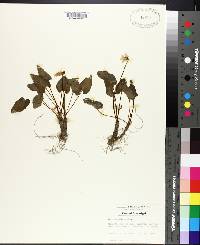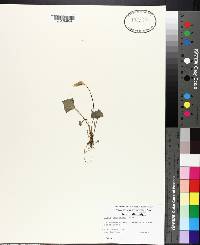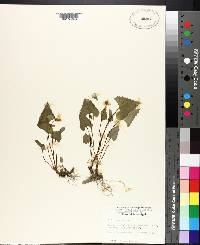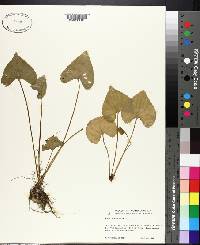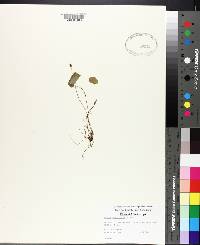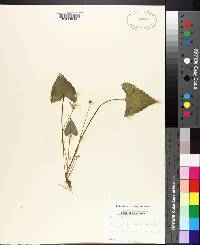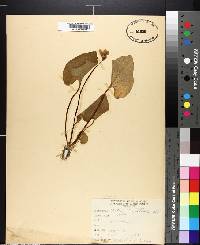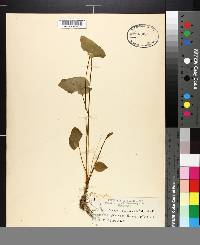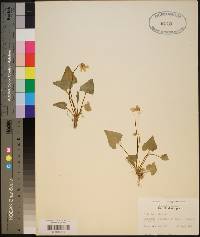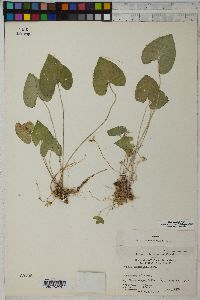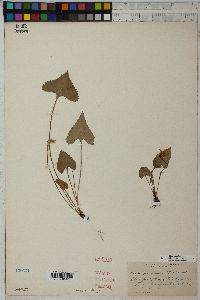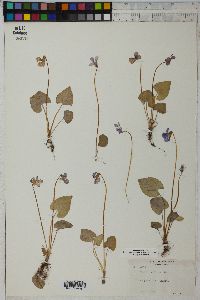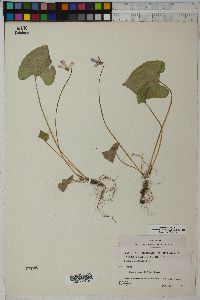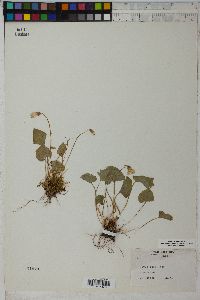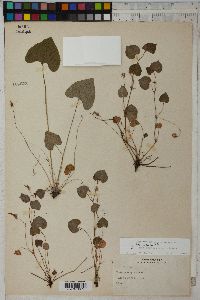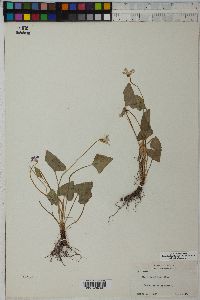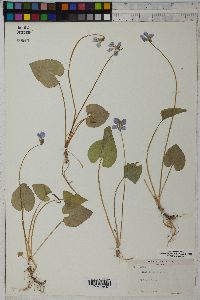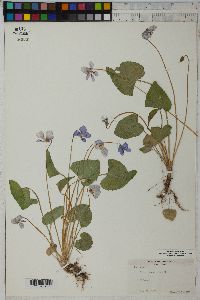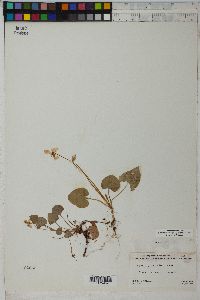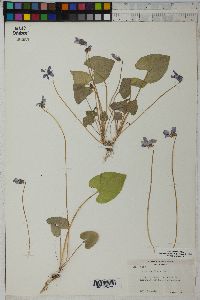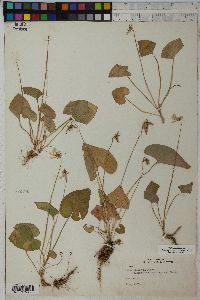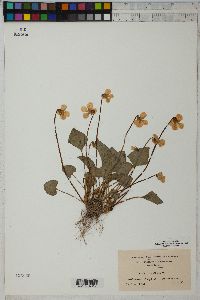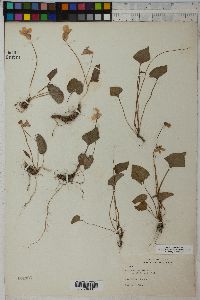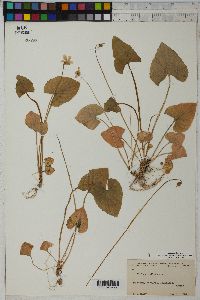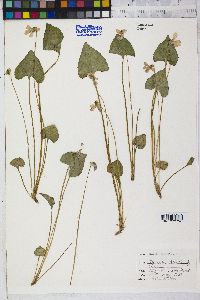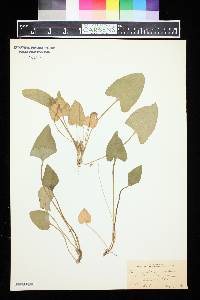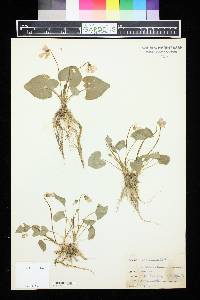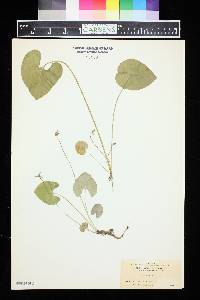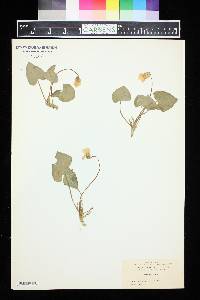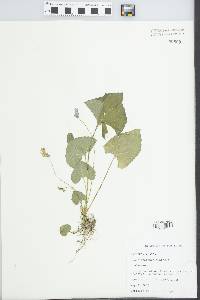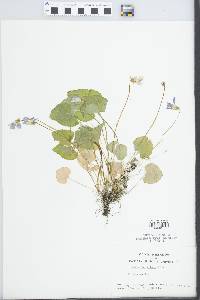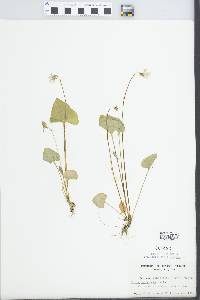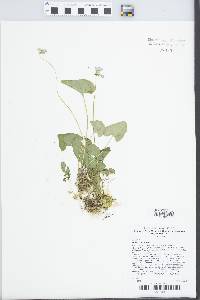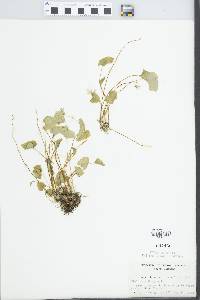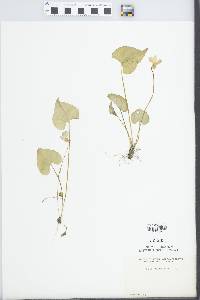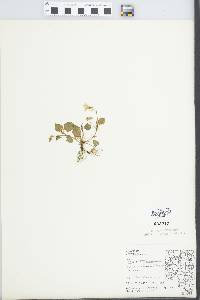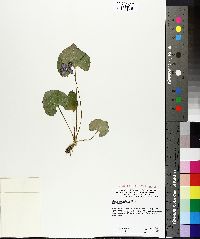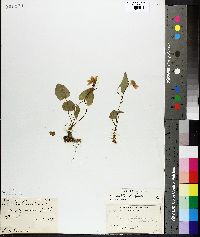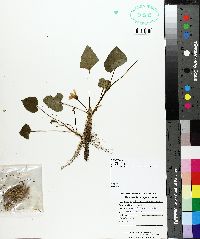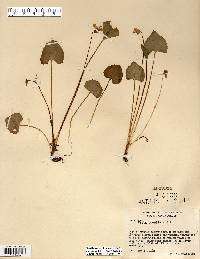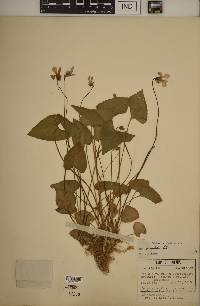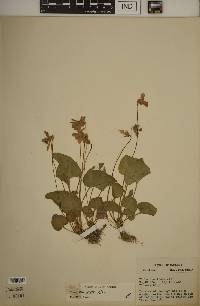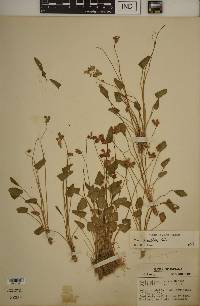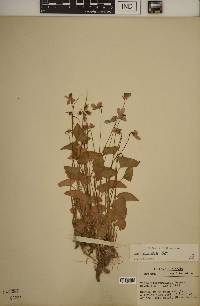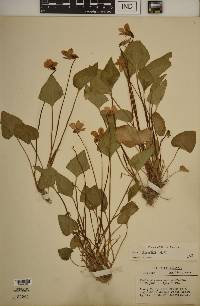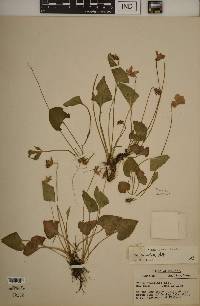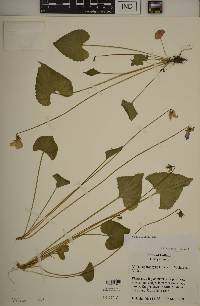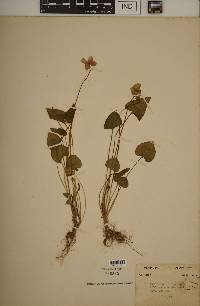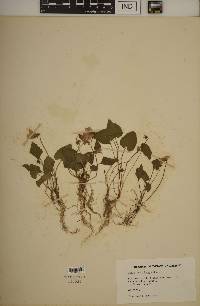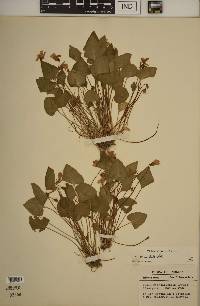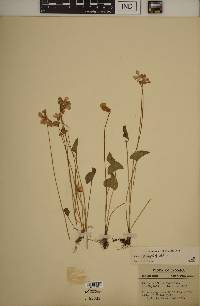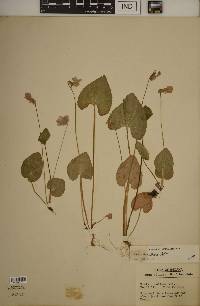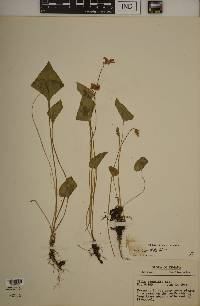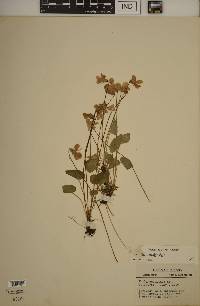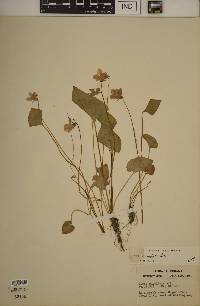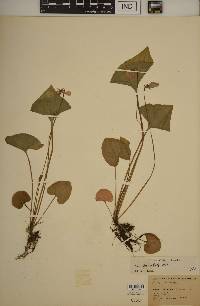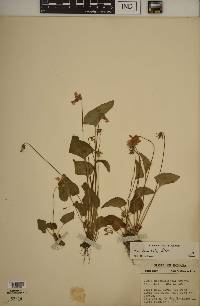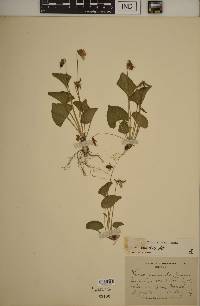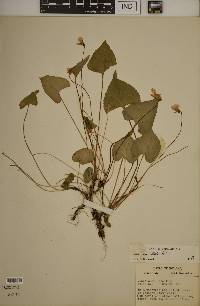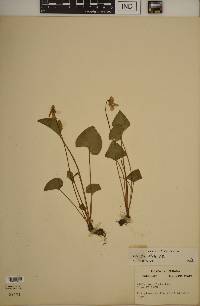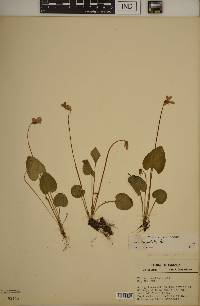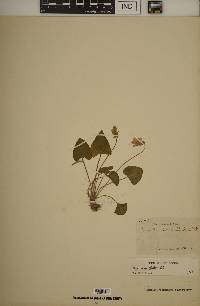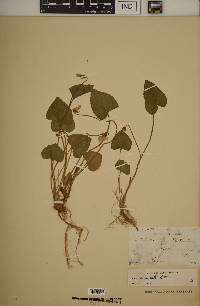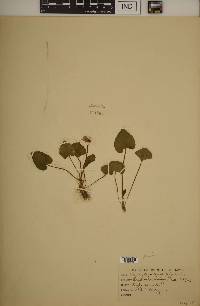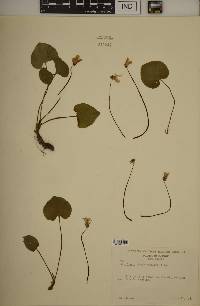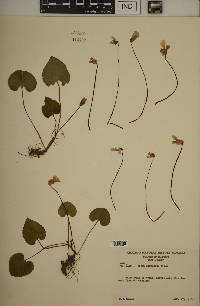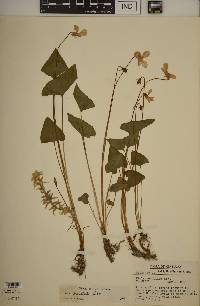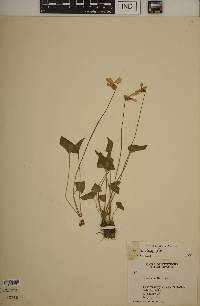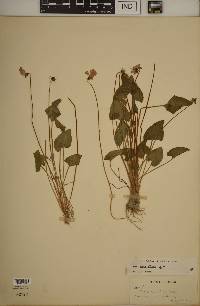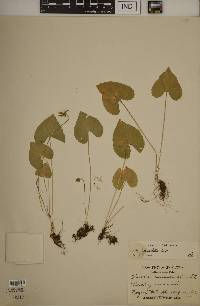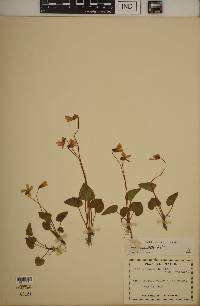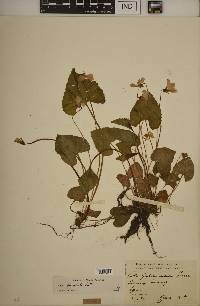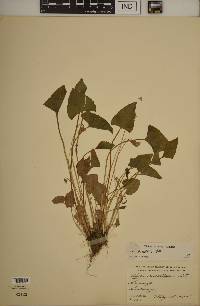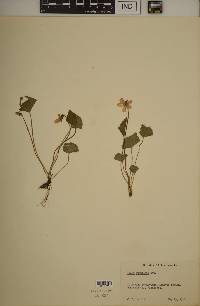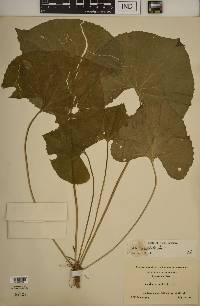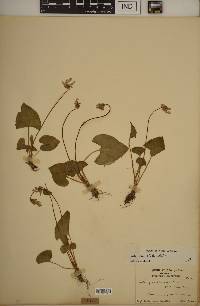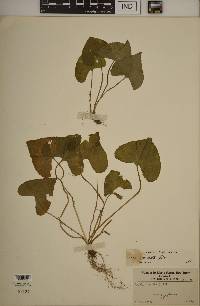
|
|
|
|
Family: Violaceae
Marsh Blue Violet, more...northern bog violet, blue marsh violet
[Viola cucullata var. microtitis Brainerd, moreViola macrotis Greene, Viola obliqua Ait.] |
Perennial herb 7 - 20 cm tall Stem: absent aboveground, leaves and flowers arising independently and directly from rootstock of thick (much greater than 3 mm diameter) rhizomes, but lacking runners (stolons). Leaves: basal, ascending, long-stalked, usually hairless, shallowly toothed, egg-shaped to heart-shaped with indented base and short pointed tip. The leaves are sometimes longer than wide though also as long as wide, but especially in fruit they are wider than long (up to 10 cm wide) and become somewhat kidney-shaped. Stipules green, less than 1.5 cm long, and fully separate from leaf stalk. Flowers: slenderly long-stalked (taller than leaves), light purple with darker purple ring at throat, about 1.5 cm long, bilaterally symmetric with two upper petals, two lateral petals, and lower petal with base modified into a rounded nectar spur. In the summer, producing long, erect stalks terminated by very fertile non-opening flowers (cleistogamous) with very elongated sepal auricles. Sepals: five, green, usually hairless, slenderly lance-shaped with long-tapering, slender, very pointed tips, and well-developed (2 - 10 mm long), ear-like appendages (auricles) at the base. The basal auricles enlarge greatly in fruit, and are also very large on the cleistogamous flowers. Petals: five, separate, all differently shaped, but facing forward. The two lateral petals have a beard of short (much less than 1 mm) club-shaped or knob-tipped hairs near the base, while the shorter lowest petal is beardless (rarely with any hairs), and prolonged at its base into a short, rounded spur or sac. Stamens: five, separate, but very tightly arranged so anthers touch as they surround ovary. The filaments are very short (anthers not exposed), and the lower two stamens have spur-like nectaries on their backs that extend into the spur or sac of the lower petal. Pistil: with a single-chambered, superior ovary; and a single style that expands into a short, scoop-shaped stigma. Fruit: a many-seeded, green, hairless, 0.5 - 1.5 cm long, egg-shaped capsule on erect stalks. The capsule opens lengthwise from its top to disperse the olive-black seeds which have a large amount of oily endosperm, and often an appendage (aril). Similar species: Viola cucullata is very similar to V. affinis, but that species does not have its flowers extending beyond the leaves in height, the basal sepal auricles are shorter (under 2 mm), the flowers do not have a darker colored throat, the spur petal is evidently bearded with long slender hairs, and the capsules, which are flecked with purple and contain light brown seeds, are on prostrate or arching stalks. Individuals of V. cucullata with leaves that are as wide or wider than long may be confused with V. nephrophylla, but that species has dark purple flowers without a noticeably darker throat, the spur petal has a very heavy beard of slender thread-like hairs, the sepals are more rounded or blunt at the tip, and the sepal auricles are shorter (under 2 mm). Another similar species is V. sororia, which shares the character of a fairly hairless spur petal, but differs by having the flowers over-topped by the leaves, the sepals are blunt-tipped, the hairs on the lateral petals are linear, and the capsules, which are purplish and contain light brown seeds, are on prostrate stalks Flowering: April to early June Habitat and ecology: Not common, restricted to swampy woods and shaded seep areas. Occurence in the Chicago region: native Notes: One of the most distinguishing characters for this species are the club-shaped or knob-tipped hairs of the lateral petal beards. Etymology: Viola is the classical name for the genus. Cucullata means "hood-like, or hood-shaped". Author: The Field Museum Glabrous, acaulescent; rhizome short, oblique or horizontal, often branching to form colonies; lvs all merely crenate-serrate, cordate at base, the blade typically held at an angle to the strongly ascending petiole, ovate to reniform at anthesis, the summer-lvs to 10 cm wide, all except the earliest acute or shortly acuminate; fls on long, slender peduncles, typically elevated well above the lvs; pet light violet to sometimes white, usually with a dark-veined eye, the 2 lateral pet densely bearded with short hairs generally well under 1 mm, many of or all the hairs strongly clavate or with a conspicuously expanded knob at the end; spurred pet glabrous, somewhat shorter than the lateral ones; cleistogamous fls long and slender, on long, erect peduncles, the auricles nearly as long as the sep; fr ovoid-cylindric, only slightly longer than the sep; seeds nearly black; 2n=54. Bogs, swamps, and other wet or moist places in shade or sun, not weedy; Nf. to Ont. and Minn., s. to N.C., Ga., Tenn., and e. Ark. Apr.-July. Gleason, Henry A. & Cronquist, Arthur J. 1991. Manual of vascular plants of northeastern United States and adjacent Canada. lxxv + 910 pp. ©The New York Botanical Garden. All rights reserved. Used by permission. From Flora of Indiana (1940) by Charles C. Deam In tamarack bogs and marshy places in the lake area and in springy places and on wet, rocky ledges in southern Indiana. Rather rare. Most of the many reports for this species should be referred to other species. …… Indiana Coefficient of Conservatism: C = 9 Wetland Indicator Status: OBL |

